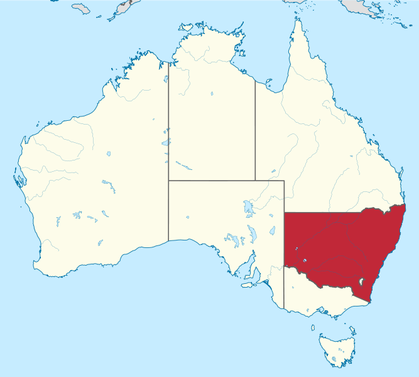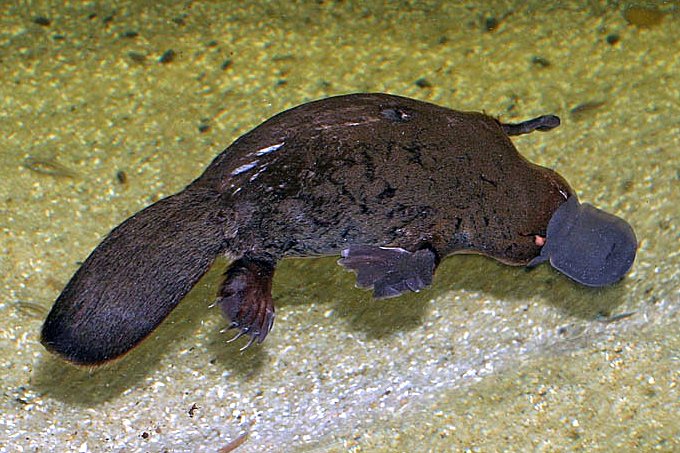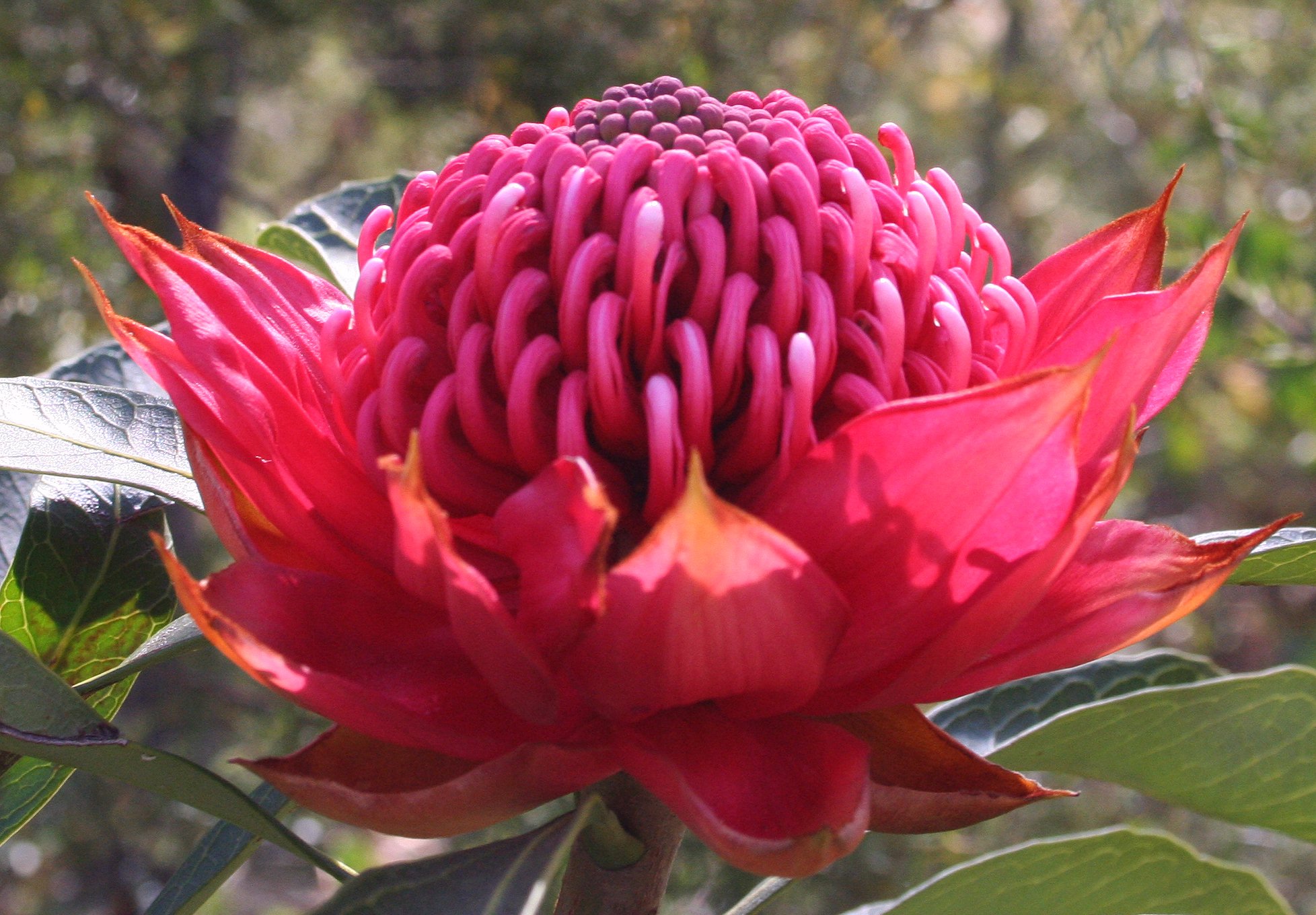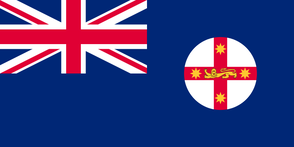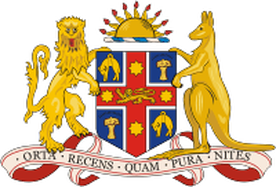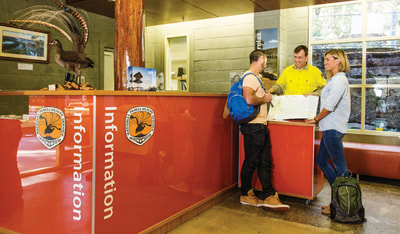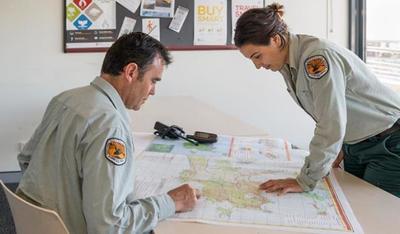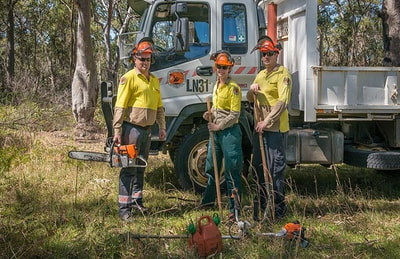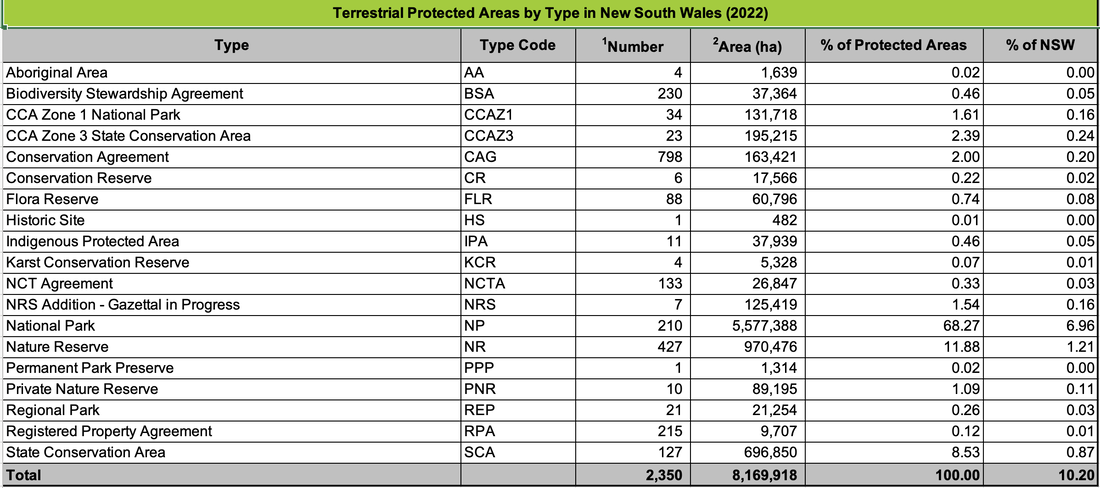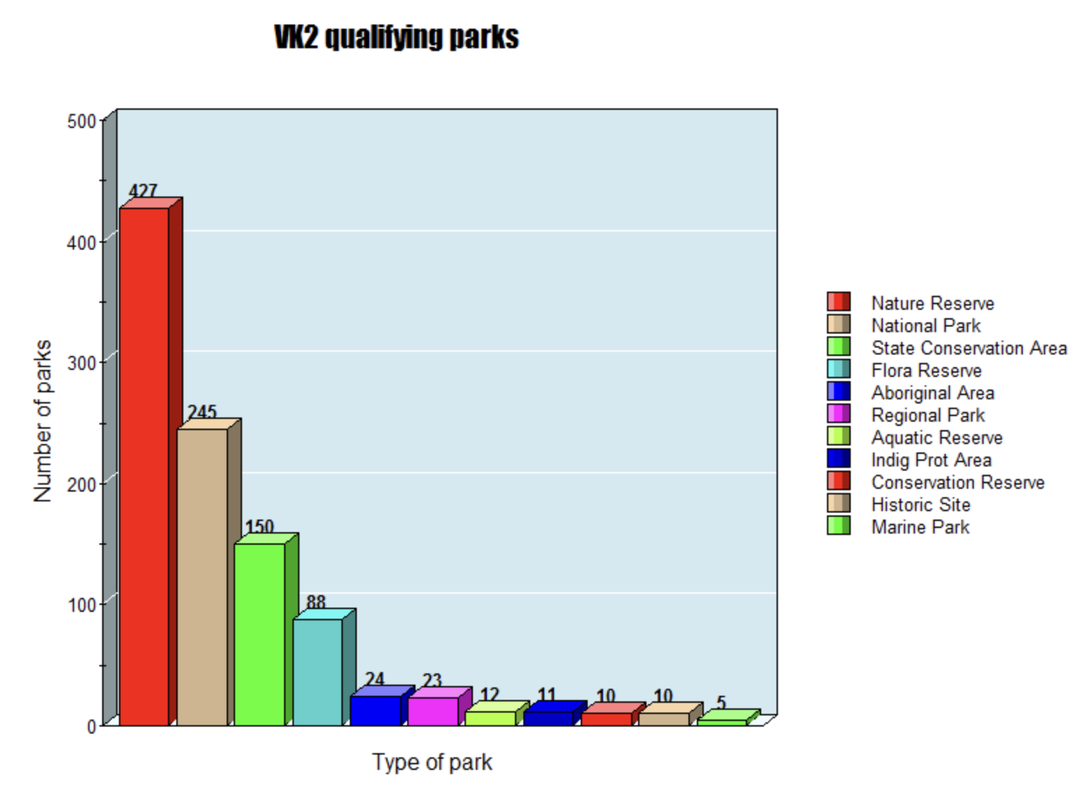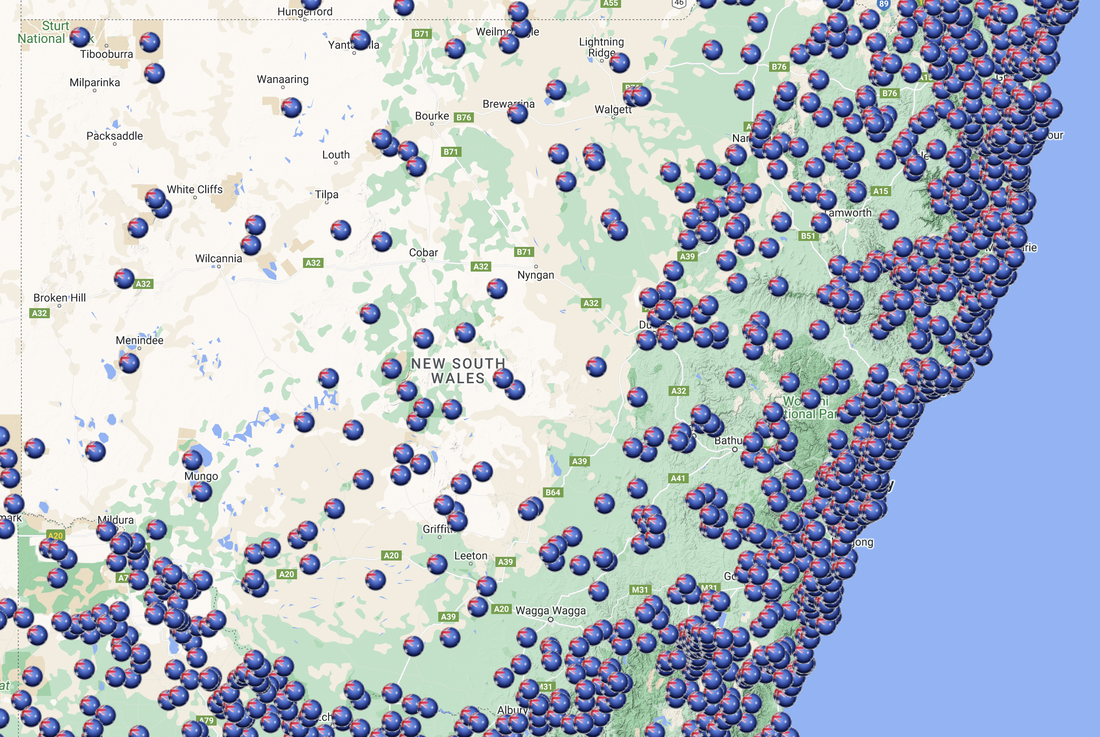NEW SOUTH WALES (VK2)
New South Wales (abbreviated as NSW) is a state in the east of Australia. It is bordered by Queensland, Victoria, and South Australia to the north, south and west respectively. To the east, the state is bordered by the Tasman Sea, which forms part of the Pacific Ocean. New South Wales surrounds the whole of the Australian Capital Territory.
New South Wales' capital city is Sydney, which is also the state's most populous city.
As of December 2016, the estimated population of NSW was 7,797, 800, making it Australia's most populous state. Inhabitants of New South Wales are referred to as New South Welshmen.
New South Wales' capital city is Sydney, which is also the state's most populous city.
As of December 2016, the estimated population of NSW was 7,797, 800, making it Australia's most populous state. Inhabitants of New South Wales are referred to as New South Welshmen.
NEW SOUTH WALES FAUNA EMBLEM.
NEW SOUTH WALES FLORA EMBLEM.
NEW SOUTH WALES STATE FLAG.
NEW SOUTH WALES COAT OF ARMS.
NEW SOUTH WALES NATIONAL PARKS & WILDLIFE SERVICE.
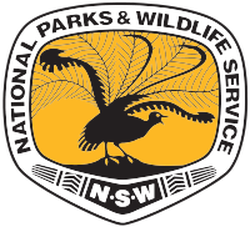
The New South Wales National Parks and Wildlife Service (NPWS) manages over 800 parks in the state of New South Wales. NPWS is part of the Office of Environment and Heritage (OEH) New South Wales and was established in 1967 when the Fauna Protection Panel and Reserves Branch of the Lands Department were amalgamated.
Under the National Parks and Wildlife Act, the Director-General of the NPWS is responsible for the care, control and management of all national parks, historic sites, nature reserves, reserves, Aboriginal areas and state game reserves. State conservation areas, karst conservation reserves and regional parks are also administered under the Act.
New South Wales has a total of 940 protected areas (from 2016 CAPD data). They protect landscapes from rainforests and rugged bush to marine wonderlands and outback deserts.
Under the National Parks and Wildlife Act, the Director-General of the NPWS is responsible for the care, control and management of all national parks, historic sites, nature reserves, reserves, Aboriginal areas and state game reserves. State conservation areas, karst conservation reserves and regional parks are also administered under the Act.
New South Wales has a total of 940 protected areas (from 2016 CAPD data). They protect landscapes from rainforests and rugged bush to marine wonderlands and outback deserts.
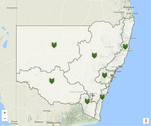
The NSW National Parks & Wildlife Service has split the State of New South Wales into 7 separate regions…..
- Outback NSW
- Country NSW
- Murray-Riverina
- North Coast
- South Coast
- Sydney and surrounds
- Snowy Mountains
TYPES OF PARKS IN NEW SOUTH WALES.
Includes:
- Aboriginal Area
- Aboriginal areas allow for use of these areas by Aboriginal people for cultural purposes. They’re intended to promote public understanding and appreciation of their natural and cultural values and significance to Aboriginal people. Aboriginal areas also provide opportunities for appropriate research in accordance with Aboriginal cultural values.
- Botanic Gardens (Commonwealth)
- Community Conservation Areas Zone 1 - reserved as National Parks
- "Community conservation areas are multiple-use protected areas that are widely used throughout the world to allow for improved conservation outcomes while providing for the sustainable use of natural resources."
- Community Conservation Areas Zone 3 - reserved as State Conservation Areas
- Conservation Reserve
- Flora Reserve (IUCN Category IA)
- Historic Site
- Indigenous Protected Area
- Karst Conservation Reserve
- Karst conservation reserves are outstanding cave areas that offer unique experiences, with their spectacular beauty and stunning surroundings. These areas provide important evidence of past life, such as relics and fossils, as well as evidence of atmospheric, hydrological and biological processes.
- National Park (IUCN Categories II, V, IA, IB)
- "National Parks are areas of land protected for their unspoiled landscapes, outstanding or representative ecosystems, Australian native plants and animals, and places of natural or cultural significance. In addition to their role in conservation, national parks provide opportunities for public nature appreciation, well-being, enjoyment, and as valuable scientific research."
- National Park (Commonwealth)
- Nature Reserve
- "Nature Reserves are areas of land in predominantly untouched, natural condition, with hign conservation value. Their primary purpose is to protect and conserve their outstanding, unique or representative ecosystems and Australian native plants and animals."
- Permanent Park Preserve
- Regional Park
- 'Regional parks are lands reserved to protect and conserve areas in natural or modified landscapes. They're also suitable for sustainable public recreation and enjoyment. Regional parks offer open spaces for cultural and recreation activities (including dog walking in some parks) which may not be permitted in national parks, state conservation areas or nature reserves."
- State Conservation Area (IUCN Category II)
- "State conservation areas are lands reserved to protect and conserve significant or representative ecosystems, landforms, natural phenomena or places of cultural significance. They provide opportunities for sustainable visitation, public enjoyment, and research."
There are also State Forests in NSW which come under the control of the Forestry Corporation.
QUALIFYING PARKS IN NEW SOUTH WALES.
There are currently (as of 7th June 2023) a total of 1,007 qualifying parks in the state of New South Wales.
They consist of:-
- 427 Nature Reserves
- 245 National Parks
- 150 State Conservation Areas
- 88 Flora Reserves
- 24 Aboriginal Areas
- 23 Regional Parks
- 12 Aquatic Reserves
- 11 Indigenous Protected Areas
- 10 Conservation Reserve
- 10 Historic Sites
- 5 Marine Parks
- 2 - Other
For a full listing of qualifying VK2 VKFF parks, please see the Qualifying VK2 parks page.
Above: Graph showing VK2 VKFF qualifying parks per type of park.
Above: Map showing VK2 VKFF qualifying parks. Map c/o https://www.cqgma.org/
A LIST OF QUALIFYING VK2 PARKS.
- Aberbaldie Nature Reserve VKFF-2507
- Abercrombie Karst Conservation Reserve VKFF-2503
- Abercrombie River National Park VKFF-0001
- Abercrombie River State Conservation Area VKFF-1266
- Adelyne State Conservation Area VKFF-1267
- Agnes Banks Nature Reserve VKFF-1881
- Andrew Johnston Big Scrub Nature Reserve VKFF-2508
- Appletree Aboriginal Area VKFF-3225
- Arakoola Nature Reserve VKFF-2509
- Arakoon National Park VKFF-0578
- Arakwal National Park VKFF-0004
- Araluen Nature Reserve VKFF-2510
- Arandin Flora Reserve VKFF-3040
- Avisford Nature Reserve VKFF-2511
- Avondale State Conservation Area VKFF-1268
- Awabakal Nature Reserve VKFF-1882
- Baalijin Nature Reserve VKFF-2512
- Back Arm Nature Reserve VKFF-2513
- Back River Nature Reserve VKFF-2514
- Badja Swamps Nature Reserve VKFF-2515
- Bago Flora Reserve VKFF-3041
- Bago Bluff National Park VKFF-0010
- Bagul Waajaar Nature Reserve VKFF-2516
- Bald Rock National Park VKFF-0011
- Ballina Nature Reserve VKFF-1883
- Balowra State Conservation Area VKFF-1269
- Bamarang Nature Reserve VKFF-2517
- Bandahngan Aboriginal Area VKFF-3031
- Bandicoot Island Nature Reserve VKFF-2518
- Bangadilly National Park VKFF-0012
- Bango Nature Reserve VKFF-1884
- Banyabba Nature Reserve VKFF-2519
- Banyabba State Conservation Area VKFF-1270
- Bar Flora Reserve VKFF-3042
- Barakee National Park VKFF-0013
- Barayamal National Park VKFF-1160
- Bargo State Conservation Area VKFF-1271
- Bargo River State Conservation Area VKFF-1272
- Barool National Park VKFF-0015
- Barrakee State Conservation Area VKFF-1273
- Barren Grounds Nature Reserve VKFF-1885
- Barrengarry Nature Reserve VKFF-1886
- Barrenjoey Head Aquatic Reserve VKFF-3246
- Barrington Tops Flora Reserve VKFF-3207
- Barrington Tops National Park VKFF-0017
- Barrington Tops State Conservation Area VKFF-1274
- Barton Nature Reserve VKFF-2520
- Barunguba Montague Island Nature Reserve VKFF-2661
- Barwon Nature Reserve VKFF-2521
- Barwon State Conservation Area VKFF-1275
- Basket Swamp National Park VKFF-0019
- Batemans Marine Park VKFF-1406
- Bedooba State Conservation Area VKFF-1276
- Bees Nest Nature Reserve VKFF-2522
- Belford National Park VKFF-0023
- Bell Bird Creek Nature Reserve VKFF-1887
- Bellinger River National Park VKFF-0024
- Belmount Nature Reserve VKFF-2523
- Belowla Island Nature Reserve VKFF-2524
- Ben Halls Gap National Park VKFF-3192
- Ben Halls Gap Nature Reserve VKFF-0027
- Benambra National Park VKFF-0029
- Bendick-Murrell National Park VKFF-1161
- Beni State Conservation Area VKFF-1277
- Bents Basin State Conservation Area VKFF-1278
- Beowa National Park VKFF-0026
- Berkeley Nature Reserve VKFF-1888
- Berlang State Conservation Area VKFF-1279
- Bermaguee Nature Reserve VKFF-2525
- Bermagui Flora Reserve VKFF-3043
- Berowra Valley National Park VKFF-1162
- Berowra Valley Regional Park VKFF-1777
- Berrico Nature Reserve VKFF-2526
- Biamanga National Park VKFF-0031
- Biddon State Conservation Area VKFF-1280
- Big Bush Nature Reserve VKFF-2527
- Big Run Flora Reserve VKFF-3044
- Billinudgel Nature Reserve VKFF-1889
- Bimberamala National Park VKFF-0032
- Bimberi Nature Reserve VKFF-1890
- Bindarri National Park VKFF-0033
- Bindarri State Conservation Area VKFF-1281
- Bingara State Conservation Area VKFF-1282
- Binjura Nature Reserve VKFF-1891
- Binnaway Nature Reserve VKFF-1892
- Bird Island Nature Reserve VKFF-2528
- Birds Rock Flora Reserve VKFF-3045
- Biriwal Bulga National Park VKFF-0034
- Black Andrew Nature Reserve VKFF-1893
- Black Bulga State Conservation Area VKFF-1283
- Blue Gum Hills Regional Park VKFF-1778
- Blue Mountains National Park VKFF-0041
- Bluff River Nature Reserve VKFF-2529
- Boat Harbour Aquatic Reserve VKFF-3247
- Boat Harbour Nature Reserve VKFF-2530
- Bobbiwaa State Conservation Area VKFF-1284
- Bobundara Nature Reserve VKFF-2531
- Bogandyera Nature Reserve VKFF-2532
- Boginderra Hills Nature Reserve VKFF-1894
- Bolivia Hill Nature Reserve VKFF-2533
- Bollanolla Nature Reserve VKFF-2534
- Bomaderry Creek Regional Park VKFF-1779
- Bondi Gulf Nature Reserve VKFF-2535
- Bongil Bongil National Park VKFF-0042
- Booderee National Park VKFF-0043
- Boomi Nature Reserve VKFF-2536
- Boomi West Nature Reserve VKFF-2537
- Boonalla Aboriginal Area VKFF-3226
- Boonanghi Nature Reserve VKFF-2538
- Boonanghi State Conservation Area VKFF-1285
- Boondelbah Nature Reserve VKFF-2539
- Boonoo Boonoo National Park VKFF-0044
- Boorabee and The Willows Indigenous Protected Area VKFF-3114
- Boorganna Nature Reserve VKFF-1895
- Booroolong Nature Reserve VKFF-2540
- Booti Booti National Park VKFF-0046
- Border Ranges National Park VKFF-0047
- Borenore Karst Conservation Reserve VKFF-2504
- Boronga Nature Reserve VKFF-2541
- Boshes Creek Flora Reserve VKFF-3046
- Bouddi National Park VKFF-0049
- Bournda National Park VKFF-0050
- Bournda Nature Reserve VKFF-1896
- Bowraville Nature Reserve VKFF-2542
- Breelong National Park VKFF-0579
- Bretti Nature Reserve VKFF-2543
- Brewarrina Ngemba Billabong Indigenous Protected Area VKFF-3115
- Bridal Veil Falls Nature Reserve VKFF-2544
- Brigalow Nature Reserve VKFF-2545
- Brigalow State Conservation Area VKFF-1286
- Brimbin Nature Reserve VKFF-1897
- Brindabella National Park VKFF-0054
- Brindingabba National Park VKFF-3811
- Brisbane Water National Park VKFF-0056
- Broad Creek Flora Reserve VKFF-3047
- Broadwater National Park VKFF-0058
- Brogo Conservation Reserve VKFF-3034
- Broken Head Nature Reserve VKFF-1898
- Bronte-Coogee Aquatic Reserve VKFF-3248
- Broulee Island Nature Reserve VKFF-2546
- Brundee Swamp Nature Reserve VKFF-2547
- Brunswick Heads Nature Reserve VKFF-1899
- Brush Island Nature Reserve VKFF-2548
- Brushy Hill Nature Reserve VKFF-2549
- Bruxner Park Flora Reserve VKFF-3048
- Bubalahla Nature Reserve VKFF-2550
- Buckingbong Flora Reserve VKFF-3049
- Budawang National Park VKFF-0061
- Budderoo National Park VKFF-0062
- Buddigower Nature Reserve VKFF-2551
- Budelah Nature Reserve VKFF-2552
- Bugan Nature Reserve VKFF-2553
- Bugong National Park VKFF-0063
- Bulagaranda (Mount Yarrowyck) Aboriginal Area VKFF-2672
- Bulahdelah State Conservation Area VKFF-1287
- Bull Island Nature Reserve VKFF-2554
- Bullala National Park VKFF-0580
- Bullawa Creek State Conservation Area VKFF-1288
- Bundjalung National Park VKFF-0065
- Bundjalung State Conservation Area VKFF-1289
- Bungabbee Nature Reserve VKFF-2555
- Bungawalbin National Park VKFF-0066
- Bungawalbin Nature Reserve VKFF-2556
- Bungawalbin State Conservation Area VKFF-1290
- Bungonia National Park VKFF-1163
- Bungonia State Conservation Area VKFF-1291
- Burning Mountain Nature Reserve VKFF-1900
- Burnt Down Scrub Nature Reserve VKFF-2557
- Burnt School Nature Reserve VKFF-1901
- Burra Creek Nature Reserve VKFF-1902
- Burragorang State Conservation Area VKFF-1292
- Burral Yurrul National Park VKFF-1164
- Burral Yurrul Nature Reserve VKFF-3029
- Burrin Burrin Conservation Reserve VKFF-3035
- Burrinjuck Nature Reserve VKFF-2558
- Burwood Creek Nature Reserve VKFF-2559
- Bushrangers Bay Aquatic Reserve VKFF-3249
- Bushy Island Nature Reserve VKFF-2560
- Butterleaf National Park VKFF-0071
- Butterleaf State Conservation Area VKFF-1293
- Byrnes Scrub Nature Reserve VKFF-2561
- Cabbage Tree Bay Aquatic Reserve VKFF-3250
- Cambewarra Range Nature Reserve VKFF-1903
- Camels Hump Nature Reserve VKFF-2562
- Camerons Gorge Nature Reserve VKFF-2563
- Camerons Gorge State Conservation Area VKFF-1294
- Cape Banks Aquatic Reserve VKFF-3251
- Cape Byron State Conservation Area VKFF-1295
- Cape Byron Marine Park VKFF-1407
- Capertee National Park VKFF-1165
- Capoompeta National Park VKFF-0083
- Captains Creek Nature Reserve VKFF-1904
- Carabost Flora Reserve VKFF-3050
- Careunga Nature Reserve VKFF-2564
- Carrabear Nature Reserve VKFF-2565
- Carrai National Park VKFF-0087
- Carrai State Conservation Area VKFF-1296
- Cascade National Park VKFF-0088
- Cascade State Conservation Area VKFF-1297
- Castlereagh Nature Reserve VKFF-1905
- Cataract National Park VKFF-0090
- Cataract State Conservation Area VKFF-1298
- Cathedral Rock National Park VKFF-0091
- Cattai National Park VKFF-0092
- Cecil Hoskins Nature Reserve VKFF-1906
- Cedar Brush Nature Reserve VKFF-2566
- Chaelundi Flora Reserve VKFF-3208
- Chaelundi National Park VKFF-0094
- Chaelundi State Conservation Area VKFF-1299
- Chambigne Nature Reserve VKFF-2567
- Chambigne State Conservation Area VKFF-1300
- Chapmans Peak Nature Reserve VKFF-2568
- Chatsworth Hill State Conservation Area VKFF-1301
- Clarence Estuary Nature Reserve VKFF-2569
- Clarkes Hill Nature Reserve VKFF-2570
- Clybucca Aboriginal Area VKFF-3032
- Clybucca Historic Site VKFF-3113
- Clyde River National Park VKFF-0102
- Cobaki Nature Reserve VKFF-1907
- Cobbora State Conservation Area VKFF-1302
- Cockle Bay Nature Reserve VKFF-1908
- Coco Creek Flora Reserve VKFF-3051
- Cocoparra National Park VKFF-0104
- Cocoparra Nature Reserve VKFF-1909
- Coffs Coast Regional Park VKFF-1780
- Colongra Swamp Nature Reserve VKFF-1910
- Columbey National Park VKFF-0581
- Columbey State Conservation Area VKFF-1303
- Colymea State Conservation Area VKFF-1304
- Combaning State Conservation Area VKFF-1305
- Comboyne Nature Reserve VKFF-2571
- Comerong Island Nature Reserve VKFF-2572
- Comleroy Flora Reserve VKFF-3209
- Coneac State Conservation Area VKFF-1306
- Conimbla National Park VKFF-0107
- Conjola National Park VKFF-0108
- Coocumbac Island Nature Reserve VKFF-2573
- Cook Island Aquatic Reserve VKFF-3252
- Cook Island Nature Reserve VKFF-2574
- Cookbundoon Nature Reserve VKFF-1911
- Coolah Tops National Park VKFF-0111
- Coolbaggie Nature Reserve VKFF-1912
- Cooleburba State Conservation Area VKFF-1307
- Coolongolook Nature Reserve VKFF-1913
- Coolumbooka Nature Reserve VKFF-2575
- Cooperabung Creek Nature Reserve VKFF-2576
- Coorabakh National Park VKFF-0114
- Coornartha Nature Reserve VKFF-1914
- Copeland Tops State Conservation Area VKFF-1308
- Copperhannia Nature Reserve VKFF-2577
- Coramba Nature Reserve VKFF-1915
- Corrabare South Flora Reserve VKFF-3210
- Corrabare North Flora Reserve VKFF-3211
- Corramy Regional Park VKFF-1781
- Corrie Island Nature Reserve VKFF-2578
- Corymbia State Conservation Area VKFF-1309
- Cottan-Bimbang National Park VKFF-0116
- Cottan-Bimbang State Conservation Area VKFF-1310
- Couchy Creek Nature Reserve VKFF-2579
- Courabyra Nature Reserve VKFF-2580
- Couradda National Park VKFF-0582
- Coxcomb Nature Reserve VKFF-2581
- Crawney Pass National Park VKFF-0583
- Crooked Creek National Park VKFF-1166
- Crowdy Bay National Park VKFF-0120
- Cudgen Nature Reserve VKFF-1916
- Cudgera Creek Nature Reserve VKFF-1917
- Culgoa National Park VKFF-0124
- Cullendulla Creek Nature Reserve VKFF-1918
- Cullunghutti Aboriginal Area VKFF-3227
- Cumbebin Swamp Nature Reserve VKFF-1919
- Cunnawarra National Park VKFF-0126
- Curracabundi National Park VKFF-0584
- Curracabundi State Conservation Area VKFF-1311
- Currowan Creek Flora Reserve VKFF-3052
- Currys Gap State Conservation Area VKFF-1312
- Cuumbeun Nature Reserve VKFF-1920
- Dalrymple-Hay Nature Reserve VKFF-1921
- Dampier Flora Reserve VKFF-3212
- Dananbilla Nature Reserve VKFF-1922
- Dandry Gorge Aboriginal Area VKFF-3228
- Dangelong Nature Reserve VKFF-2582
- Dapper Nature Reserve VKFF-2583
- Darawank Nature Reserve VKFF-1923
- Davidson Whaling Station Historic Site VKFF-3200
- Davis Scrub Nature Reserve VKFF-2584
- Deer Vale Nature Reserve VKFF-2585
- Demon Nature Reserve VKFF-2586
- Deriah Aboriginal Area VKFF-3229
- Deua National Park VKFF-0138
- Dharawal National Park VKFF-1167
- Dharawal Nature Reserve VKFF-1924
- Dharawal State Conservation Area VKFF-1313
- Dharug National Park VKFF-0139
- Doctors Nose Mountain Nature Reserve VKFF-2587
- Donnybrook Nature Reserve VKFF-2588
- Doodle Comer Swamp Nature Reserve VKFF-1925
- Dooragan National Park VKFF-0143
- Dorodong Indigenous Protected Area VKFF-3116
- Dorrigo National Park VKFF-0144
- Dowe National Park VKFF-0585
- Downfall Nature Reserve VKFF-2589
- Drillwarrina National Park VKFF-0586
- Dthinna Dthinnawan National Park VKFF-0587
- Dthinna Dthinnawan Nature Reserve VKFF-2590
- Dubay Nurahm Aboriginal Area VKFF-3230
- Dunggir National Park VKFF-0151
- Dural Nature Reserve VKFF-1926
- Durands Island Nature Reserve VKFF-2591
- Duroby Nature Reserve VKFF-2592
- Durridgere State Conservation Area VKFF-1314
- Duval Nature Reserve VKFF-1927
- Eagles Claw Nature Reserve VKFF-2593
- Edmondson Regional Park VKFF-2781
- Egan Peaks Nature Reserve VKFF-1928
- Ellerslie Nature Reserve VKFF-2594
- Eugowra Nature Reserve VKFF-2595
- Eurabbie Flora Reserve VKFF-3053
- Eurobodalla National Park VKFF-0164
- Eusdale Nature Reserve VKFF-1929
- Euston Regional Park VKFF-1782
- Evans Crown Nature Reserve VKFF-2596
- Everlasting Swamp National Park VKFF-1168
- Everlasting Swamp State Conservation Area VKFF-1315
- Fifes Knob Nature Reserve VKFF-2597
- Finchley Aboriginal Area VKFF-3231
- Fishermans Bend Nature Reserve VKFF-1930
- Five Islands Nature Reserve VKFF-2598
- Fivebough and Tuckerbil Swamps VKFF-3266
- Fladbury Nature Reserve VKFF-2599
- Flaggy Creek Nature Reserve VKFF-2600
- Flagstaff Memorial Nature Reserve VKFF-2601
- Flat Island Nature Reserve VKFF-2602
- Forest Land Flora Reserve VKFF-3054
- Fortis Creek National Park VKFF-0180
- Freemantle Nature Reserve VKFF-2603
- Frogs Hole Nature Reserve VKFF-2604
- Gaagal Wanggaan (South Beach) National Park VKFF-1169
- Gads Sugarloaf Nature Reserve VKFF-2605
- Gamilaroi Nature Reserve VKFF-2606
- Ganay Nature Reserve VKFF-2607
- Gandangara State Conservation Area VKFF-1316
- Garawarra State Conservation Area VKFF-1317
- Garby Nature Reserve VKFF-1931
- Gardens of Stone National Park VKFF-0190
- Gardens of Stone State Conservation Area VKFF-3199
- Garigal National Park VKFF-0191
- Garrawilla National Park, VKFF-0588
- Georges Creek Nature Reserve VKFF-2608
- Georges River National Park VKFF-0195
- Ghin-Doo-Ee National Park VKFF-0196
- Gibraltar Nature Reserve VKFF-2609
- Gibraltar Range National Park VKFF-0197
- Gillindich Nature Reserve VKFF-2610
- Gilwarny Nature Reserve VKFF-2611
- Ginghet Nature Reserve VKFF-2612
- Gir-um-bit National Park VKFF-0589
- Gir-um-bit State Conservation Area VKFF-1318
- Girralang Nature Reserve VKFF-2613
- Glenrock State Conservation Area VKFF-1319
- Glenugie Peak Flora Reserve VKFF-3055
- Goobang National Park VKFF-0204
- Good Good Nature Reserve VKFF-2614
- Goodiman State Conservation Area VKFF-1320
- Goolawah National Park VKFF-1170
- Goolawah Regional Park VKFF-1783
- Goonengerry National Park VKFF-0208
- Goonoo National Park VKFF-0590
- Goonoo State Conservation Area VKFF-1321
- Goonook Nature Reserve VKFF-2615
- Goonoowigal State Conservation Area VKFF-1322
- Goorooyarroo Nature Reserve VKFF-1932
- Goulburn River National Park VKFF-0211
- Goulburn River State Conservation Area VKFF-3030
- Gourock National Park VKFF-0212
- Grange Flora Reserve VKFF-3056
- Gubbata Nature Reserve VKFF-2616
- Gulaga National Park VKFF-0221
- Gulguer Nature Reserve VKFF-1933
- Gumbaynggirr National Park VKFF-0591
- Gumbaynggirr State Conservation Area VKFF-1323
- Gumma Indigeneous Protected Area VKFF-3117
- Gundabooka National Park VKFF-0222
- Gundabooka State Conservation Area VKFF-1324
- Gungewalla Nature Reserve VKFF-2617
- Gunyerwarildi National Park VKFF-0592
- Gurranang State Conservation Area VKFF-1325
- Guula Ngurra National Park VKFF-3028
- Guy Fawkes Nature Reserve VKFF-1934
- Guy Fawkes River Flora Reserve VKFF-3213
- Guy Fawkes River National Park VKFF-0224
- Guy Fawkes River State Conservation Area VKFF-1326
- Gwydir River National Park VKFF-0593
- Gwydir River State Conservation Area VKFF-1327
- Gwydir Wetlands State Conservation Area VKFF-1328
- Hat Head National Park VKFF-0230
- Hattons Bluff Nature Reserve VKFF-2618
- Hattons Corner Nature Reserve VKFF-1935
- Hayters Hill Nature Reserve VKFF-1936
- Heathcote National Park VKFF-0232
- Helms Flora Reserve VKFF-3057
- Hobden Hill National Park VKFF-1171
- Hogarth Range Nature Reserve VKFF-2619
- Horton Falls National Park VKFF-0594
- Hortons Creek Nature Reserve VKFF-2620
- Howe Aboriginal Area VKFF-3232
- Hunter Wetlands National Park VKFF-0595
- Illawarra Escarpment State Conservation Area VKFF-1329
- Illawong Nature Reserve VKFF-1937
- Illunie Nature Reserve VKFF-2621
- Iluka Nature Reserve VKFF-1938
- Imbota Nature Reserve VKFF-1939
- Indwarra National Park VKFF-0242
- Ingalba Nature Reserve VKFF-1940
- Inner Pocket Nature Reserve VKFF-2622
- Innes Ruins Historic Site VKFF-3258
- Ironbark Nature Reserve VKFF-2623
- Ironmungy Nature Reserve VKFF-2624
- Jaaningga Nature Reserve VKFF-2625
- Jackywalbin State Conservation Area VKFF-1330
- Jagun Nature Reserve VKFF-1941
- Jasper Nature Reserve VKFF-2626
- Jellore Flora Reserve VKFF-3214
- Jenolan Karst Conservation Reserve VKFF-2505
- Jerewarrah Flora Reserve VKFF-3058
- Jerilderie Nature Reserve VKFF-1942
- Jerrabattgulla Flora Reserve VKFF-3059
- Jerralong Nature Reserve VKFF-2627
- Jerrawangala National Park VKFF-0248
- Jervis Bay Marine Park VKFF-1408
- Jervis Bay National Park VKFF-0249
- Jilliby State Conservation Area VKFF-1331
- Jimberoo National Park VKFF-1172
- Jinangong Nature Reserve VKFF-1943
- Jindalee National Park VKFF-1173
- Jingellic Nature Reserve VKFF-2628
- Jingera Flora Reserve VKFF-3060
- Joadja Nature Reserve VKFF-1944
- Jobs Mountain Nature Reserve VKFF-2629
- John Gould Nature Reserve VKFF-2630
- Jubullum Flat Camp Aboriginal Area VKFF-3233
- Julian Rocks Nguthungulli Nature Reserve VKFF-2631
- Junuy Juluum National Park VKFF-0251
- Juugawaarri Nature Reserve VKFF-2632
- Kajuligah Nature Reserve VKFF-2633
- Kalyarr National Park VKFF-1858
- Kamay Botany Bay National Park VKFF-0048
- Kanangra-Boyd National Park VKFF-0256
- Kangaroo River Nature Reserve VKFF-1945
- Karuah National Park VKFF-0596
- Karuah Nature Reserve VKFF-1946
- Karuah State Conservation Area VKFF-1332
- Kattang Nature Reserve VKFF-1947
- Kemendok National Park VKFF-1174
- Kemendok Nature Reserve VKFF-1948
- Kemps Creek Nature Reserve VKFF-1949
- Kerrawary Nature Reserve VKFF-1950
- Keverstone National Park VKFF-1175
- Keverstone State Conservation Area VKFF-1333
- Khappinghat National Park VKFF-1776
- Khappinghat Nature Reserve VKFF-1951
- Khatambuhl Nature Reserve VKFF-2634
- Killabakh Nature Reserve VKFF-2635
- Killalea Regional Park VKFF-3196
- Killarney Nature Reserve VKFF-2636
- Killarney State Conservation Area VKFF-1334
- Kilprotay Flora Reserve VKFF-3215
- Kinchega National Park VKFF-0263
- Kindee Creek State Conservation Area VKFF-3201
- Kings Plains National Park VKFF-0265
- Kirramingly Nature Reserve VKFF-1952
- Koolewong Flora Reserve VKFF-3216
- Koonaburra National Park VKFF-3193
- Koonadan Historic Site VKFF-3259
- Kooraban National Park VKFF-0267
- Koorawatha Nature Reserve VKFF-1953
- Koorebang Nature Reserve VKFF-2637
- Kooyong State Conservation Area VKFF-1335
- Koreelah National Park VKFF-0268
- Kororo Nature Reserve VKFF-2638
- Kosciuszko National Park VKFF-0269
- Koukandowie Nature Reserve VKFF-2639
- Ku-ring-gai Chase National Park VKFF-0272
- Kuma Nature Reserve VKFF-1954
- Kumbatine National Park VKFF-0271
- Kumbatine State Conservation Area VKFF-1336
- Kwiambal National Park VKFF-0274
- Kybeyan Nature Reserve VKFF-2640
- Kybeyan State Conservation Area VKFF-1337
- Lachlan Valley National Park VKFF-0255
- Lachlan Valley Nature Reserve VKFF-2641
- Lachlan Valley Regional Park VKFF-1784
- Lachlan Valley State Conservation Area VKFF-1338
- Lake Innes Nature Reserve VKFF-1955
- Lake Innes State Conservation Area VKFF-1339
- Lake Macquarie State Conservation Area VKFF-1340
- Lake Urana Nature Reserve VKFF-1956
- Lane Cove National Park VKFF-0281
- Lanes Mill Flora Reserve VKFF-3061
- Langidoon-Metford State Conservation Area VKFF-3202
- Langtree Nature Reserve VKFF-2642
- Lansdowne Nature Reserve VKFF-2643
- Laurel Hill Flora Reserve VKFF-3062
- Lawrence Road State Conservation Area VKFF-1341
- Leacock Regional Park VKFF-2782
- Leard State Conservation Area VKFF-1342
- Ledknapper Nature Reserve VKFF-2644
- Lennox Head Aboriginal Area VKFF-3234
- Letts Mountain Flora Reserve VKFF-3063
- Limeburners Creek National Park VKFF-0597
- Limpinwood Nature Reserve VKFF-2645
- Linton Nature Reserve VKFF-2646
- Lion Island Nature Reserve VKFF-2647
- Little Broughton Island Nature Reserve VKFF-2648
- Little Llangothlin Nature Reserve VKFF-1957
- Little Pimlico Island Nature Reserve VKFF-2649
- Livingstone National Park VKFF-0292
- Livingstone State Conservation Area VKFF-1343
- Long Island Nature Reserve VKFF-2650
- Long Reef Aquatic Reserve VKFF-3253
- Loughnan Nature Reserve VKFF-2651
- Macanally State Conservation Area VKFF-1344
- Macquarie Nature Reserve VKFF-1958
- Macquarie Marshes Nature Reserve VKFF-2652
- Macquarie Pass National Park VKFF-0298
- Macquarie Pass State Conservation Area VKFF-1345
- Madmans Creek Flora Reserve VKFF-3064
- Majors Creek State Conservation Area VKFF-1346
- Malabar Headland National Park VKFF-1176
- Mallanganee National Park VKFF-0301
- Mallee Cliffs National Park VKFF-0302 (currently NO access to this park)
- Mann River Nature Reserve VKFF-1959
- Manobalai Nature Reserve VKFF-1960
- Mares Forest National Park VKFF-1177
- Mares Hill Flora Reserve VKFF-3065
- Maria National Park VKFF-0304
- Maroomba State Conservation Area VKFF-1347
- Maroota Historic Site VKFF-3262
- Maroota Ridge State Conservation Area VKFF-1348
- Marramarra National Park VKFF-0307
- Marrangaroo National Park VKFF-0598
- Marshalls Creek Nature Reserve VKFF-1961
- Maryland National Park VKFF-0309
- Mawonga Indigenous Protected Area VKFF-3224
- Maxwells Flora Reserve VKFF-3066
- Mcleods Creek Nature Reserve VKFF-2653
- Mebbin National Park VKFF-0311
- Medowie Nature Reserve VKFF-1962
- Medowie State Conservation Area VKFF-1349
- Melville Range Nature Reserve VKFF-2654
- Meringo Nature Reserve VKFF-2655
- Mernot Nature Reserve VKFF-2656
- Meroo National Park VKFF-0312
- Merriangaah Nature Reserve VKFF-2657
- Merriwindi State Conservation Area VKFF-1350
- Micalong Swamp Flora Reserve VKFF-3067
- Middle Brother National Park VKFF-0314
- Middle Creek Flora Reserve VKFF-3068
- Midkin Nature Reserve VKFF-1963
- Mills Island Nature Reserve VKFF-2658
- Mimosa Rocks National Park VKFF-0317
- Mines Road Flora Reserve VKFF-3069
- Minimbah Nature Reserve VKFF-1964
- Minjary National Park VKFF-0319
- Minyumai Indigenous Protected Area VKFF-3118
- Mobong Creek Flora Reserve VKFF-3070
- Moema National Park VKFF-0599
- Moffats Swamp Nature Reserve VKFF-1965
- Mogriguy National Park VKFF-0600
- Monga National Park VKFF-0324
- Monga State Conservation Area VKFF-1351
- Monkerai Nature Reserve VKFF-2659
- Monkeycot Nature Reserve VKFF-2660
- Mooball National Park VKFF-0325
- Moon Island Nature Reserve VKFF-2662
- Moonee Beach Nature Reserve VKFF-1966
- Mooney Mooney Aboriginal Area VKFF-3235
- Moore Park Nature Reserve VKFF-1967
- Mororo Creek Nature Reserve VKFF-2663
- Morrisons Lake Nature Reserve VKFF-2664
- Morton National Park VKFF-0334
- Morton State Conservation Area VKFF-1352
- Mother of Ducks Lagoon Nature Reserve VKFF-1968
- Mount Allyn Flora Reserve VKFF-3071
- Mount Canobolas State Conservation Area VKFF-1353
- Mount Clifford Nature Reserve VKFF-2665
- Mount Clunie National Park VKFF-0341
- Mount Davies Nature Reserve VKFF-2666
- Mount Dowling Nature Reserve VKFF-2667
- Mount Grenfell Historic Site VKFF-3261
- Mount Grenfell National Park VKFF-3194
- Mount Grenfell State Conservation Area VKFF-3203
- Mount Hyland Nature Reserve VKFF-1969
- Mount Hyland State Conservation Area VKFF-1354
- Mount Imlay National Park VKFF-0350
- Mount Jerusalem National Park VKFF-0351
- Mount Kaputar National Park VKFF-0353
- Mount Kuring-gai Aboriginal Area VKFF-3236
- Mount Mackenzie Nature Reserve VKFF-2668
- Mount Neville Nature Reserve VKFF-2669
- Mount Nothofagus National Park VKFF-0355
- Mount Nullum Nature Reserve VKFF-2670
- Mount Pikapene National Park VKFF-0358
- Mount Pikapene State Conservation Area VKFF-1355
- Mount Pipanpinga Flora Reserve VKFF-3072
- Mount Poole Flora Reserve VKFF-3073
- Mount Royal National Park VKFF-0362
- Mount Seaview Nature Reserve VKFF-2671
- Muckleewee Mountain Nature Reserve VKFF-2673
- Mudjarn Nature Reserve VKFF-2674
- Mugii Murrum-ban State Conservation Area VKFF-1356
- Muldiva Nature Reserve VKFF-2675
- Mulgoa Nature Reserve VKFF-1970
- Mullengandra Nature Reserve VKFF-2676
- Mullengandra State Conservation Area VKFF-1357
- Mullion Range State Conservation Area VKFF-1358
- Mumbulla Flora Reserve VKFF-3074
- Mummel Gulf National Park VKFF-0368
- Mummel Gulf State Conservation Area VKFF-1359
- Mundaroo Flora Reserve VKFF-3075
- Mundoonen Nature Reserve VKFF-1971
- Munghorn Gap Nature Reserve VKFF-1972
- Mungo National Park VKFF-0370
- Mungo State Conservation Area VKFF-1360
- Munmorah State Conservation Area VKFF-1361
- Munro Island Nature Reserve VKFF-2677
- Muogamarra Nature Reserve VKFF-1973
- Murraguldrie Flora Reserve VKFF-3076
- Murrah Flora Reserve VKFF-3077
- Murramarang Aboriginal Area VKFF-3237
- Murramarang National Park VKFF-0371
- Murray Valley National Park VKFF-1178
- Murray Valley Regional Park VKFF-1785
- Murrumbidgee Valley Nature Reserve VKFF-1974
- Murrumbidgee Valley National Park VKFF-0554
- Murrumbidgee Valley Regional Park VKFF-1786
- Murrurundi Pass National Park VKFF-0601
- Mutawintji Historic Site VKFF-3262
- Mutawintiji Nature Reserve VKFF-1975
- Mutawintji National Park VKFF-0374
- Mutawintji State Conservation Area VKFF-3204
- Muttonbird Island Nature Reserve VKFF-1976
- Myall Lakes National Park VKFF-0375
- Myalla Nature Reserve VKFF-2678
- Nadgee Nature Reserve VKFF-1977
- Nadgigomar Nature Reserve VKFF-2679
- Nambucca Aboriginal Area VKFF-3238
- Nameless Sylvan Conservation Reserve VKFF-3036 (no access allowed)
- Nangar National Park VKFF-0379
- Naree Station Conservation Reserve VKFF-3037
- Narrabarba Hill Flora Reserve VKFF-3078
- Narrabeen Head Aquatic Reserve VKFF-3254
- Narran Lake Nature Reserve VKFF-2680
- Narrangarril Nature Reserve VKFF-1978
- Narrawallee Creek Nature Reserve VKFF-1979
- Narriearra Caryapundy Swamp National Park VKFF-3195
- Nattai National Park VKFF-0383
- Nattai State Conservation Area VKFF-1363
- Nearie Lake Nature Reserve VKFF-2681
- Nest Hill Nature Reserve VKFF-2682
- Nethercott Falls Flora Reserve VKFF-3079
- New England National Park VKFF-0385
- Newington Nature Reserve VKFF-1980
- Ngadang Nature Reserve VKFF-2683
- Ngambaa Nature Reserve VKFF-1981
- Ngiyungbayi Aboriginal Area VKFF-3239
- Ngula Bulgarabang Regional Park VKFF-3197
- Ngulin Nature Reserve VKFF-2684
- Ngunya Jargoon Indigeneous Protected Area VKFF-3119
- Nicholii Flora Reserve VKFF-3080
- Nightcap National Park VKFF-0389
- Nimmo Nature Reserve VKFF-2685
- Nocoleche Nature Reserve VKFF-2686
- Nombinnie Nature Reserve VKFF-2687
- Nombinnie State Conservation Area VKFF-1364
- North Harbour Aquatic Reserve VKFF-3255
- North Obelisk Nature Reserve VKFF-2689
- North Rock Nature Reserve VKFF-2690
- North Solitary Island Nature Reserve VKFF-2691
- North-West Solitary Island Nature Reserve VKFF-2688
- Nowendoc National Park VKFF-0395
- Nuggetty State Conservation Area VKFF-1365
- Nullamanna National Park VKFF-0602
- Nullica Flora Reserve VKFF-3081
- Nullo Mountain Flora Reserve VKFF-3082
- Numeralla Nature Reserve VKFF-2692
- Numinbah Nature Reserve VKFF-2693
- Nunguu Mirral Aboriginal Area VKFF-3033
- Nymboi-Binderay National Park VKFF-0399
- Nymboi-Binderay State Conservation Area VKFF-1366
- Nymboida National Park VKFF-0400
- Nymboida State Conservation Area VKFF-1367
- Oak Creek Nature Reserve VKFF-1982
- Oakdale Nature Reserve VKFF-2694
- Oakwood Flora Reserve VKFF-3217
- Old Jeremiah Flora Reserve VKFF-3083
- Olney Flora Reserve VKFF-3084
- One Tree Island Nature Reserve VKFF-2695
- Oolambeyan National Park VKFF-0403
- Oxley Wild Rivers National Park VKFF-0406
- Oxley Wild Rivers State Conservation Area VKFF-1368
- Paddington Nature Reserve VKFF-2696
- Paddys Brush Flora Reserve VKFF-3085
- Paddys River Flora Reserve VKFF-3086
- Palm Grove Nature Reserve VKFF-1983
- Pambalong Nature Reserve VKFF-2697
- Paperbark Flora Reserve VKFF-3218
- Parma Creek Nature Reserve VKFF-2698
- Paroo-Darling National Park VKFF-0410
- Paroo-Darling State Conservation Area VKFF-1369
- Parr State Conservation Area VKFF-1370
- Parramatta River Regional Park VKFF-2783
- Paupong Nature Reserve VKFF-2699
- Peach Tree Creek Flora Reserve VKFF-3087
- Pee Dee Nature Reserve VKFF-2700
- Pelican Island Nature Reserve VKFF-2701
- Pilliga National Park VKFF-0603
- Pilliga Nature Reserve VKFF-2702
- Pilliga State Conservation Area VKFF-1371
- Pilliga East State Conservation Area VKFF-1372
- Pilliga West National Park VKFF-0604
- Pilliga West State Conservation Area VKFF-1373
- Pindera Downs Aboriginal Area VKFF-3240
- Pitt Town Nature Reserve VKFF-1984
- Planchonella Nature Reserve VKFF-2703
- Pokolbin Flora Reserve VKFF-3088
- Pollack Flora Reserve VKFF-3089
- Pomaderris Nature Reserve VKFF-1985
- Popran National Park VKFF-0417
- Port Stephens/Great Lakes Marine Park VKFF-1410
- Prospect Nature Reserve VKFF-1986 (currently NO access to this park)
- Pucawan Nature Reserve VKFF-2704
- Pulbah Island Nature Reserve VKFF-2705
- Pulletop Nature Reserve VKFF-2706
- Pyrocarpa Flora Reserve VKFF-3090
- Quanda Nature Reserve VKFF-1987
- Queanbeyan Nature Reserve VKFF-1988
- Queens Lake Nature Reserve VKFF-1989
- Queens Lake State Conservation Area VKFF-1771
- Quidong Nature Reserve VKFF-2707
- Ramornie National Park VKFF-0426
- Rawdon Creek Nature Reserve VKFF-1990
- Razorback Nature Reserve VKFF-2708
- Regatta Island Nature Reserve VKFF-2709
- Richmond Range National Park VKFF-0431
- Richmond River Nature Reserve VKFF-1991
- Richters Caves Flora Reserve VKFF-3091
- Rileys Island Nature Reserve VKFF-2710
- Robertson Nature Reserve VKFF-1992
- Rocky Glen National Park VKFF-1179
- Rodway Nature Reserve VKFF-1993
- Round Hill Nature Reserve VKFF-2711
- Rouse Hill Regional Park VKFF-2784
- Royal National Park VKFF-0435
- Saltwater National Park VKFF-0439
- Saltwater Swamp Nature Reserve VKFF-2712 (NO access allowed unless in possession of a PERMIT).
- Sandgate Flora Reserve VKFF-3092
- Sappa Bulga National Park VKFF-1180
- Saratoga Island Nature Reserve VKFF-2713
- Scabby Range Nature Reserve VKFF-2714
- Scheyville National Park VKFF-0444
- Scone Mountain National Park VKFF-0605
- Scott Nature Reserve VKFF-2715
- Scottsdale Conservation Reserve VKFF-3038
- Sea Acres National Park VKFF-0606
- Seaham Swamp Nature Reserve VKFF-1994
- Seal Rocks Nature Reserve VKFF-2716
- Selection Flat Flora Reserve VKFF-3093
- Serpentine Nature Reserve VKFF-1995
- Serpentine Ridge National Park VKFF-1181
- Seven Mile Beach National Park VKFF-0447
- Severn River Nature Reserve VKFF-2717
- Shark Island Nature Reserve VKFF-2718
- Sherwood Nature Reserve VKFF-1996
- Shiprock Aquatic Reserve VKFF-3256
- Sidlings Swamp Flora Reserve VKFF-3094
- Silvestris Flora Reserve VKFF-3095
- Single National Park VKFF-0450
- Skillion Nature Reserve VKFF-2719
- Smiths Lake Nature Reserve VKFF-2720
- Snapper Island Nature Reserve VKFF-2721
- Snow Gum Flora Reserve VKFF-3096
- Snows Gully Nature Reserve VKFF-2722
- Solitary Islands Marine Park VKFF-1411
- Somerton National Park VKFF-0607
- South East Forests National Park VKFF-0458
- South Solitary Island Historic Site VKFF-3263
- South West Solitary Island Nature Reserve VKFF-2723
- South West Woodland Nature Reserve VKFF-2724
- Spectacle Island Nature Reserve VKFF-2725
- Split Solitary Island Nature Reserve VKFF-2726
- Stingray Swamp Flora Reserve VKFF-3097
- Stonewoman Aboriginal Area VKFF-3241
- Stony Batter Creek Nature Reserve VKFF-2727
- Stony Creek Nature Reserve VKFF-1997
- Stormpetrel Nature Reserve VKFF-2728
- Stotts Island Nature Reserve VKFF-2729
- Strahorn Flora Reserve VKFF-3098
- Strike-a-light Nature Reserve VKFF-1998
- Sturt National Park VKFF-0470
- Sugarloaf State Conservation Area VKFF-1772
- Susan Island Nature Reserve VKFF-2730
- Sydney Harbour National Park VKFF-0473
- Tabbimoble Swamp Nature Reserve VKFF-2731
- Table Creek Flora Reserve VKFF-3099
- Tabletop Nature Reserve VKFF-1999
- Talawahl Nature Reserve VKFF-2732
- Talawahl State Conservation Area VKFF-1374
- Tallaganda National Park VKFF-0474
- Tallaganda State Conservation Area VKFF-1375
- Tallawudjah Nature Reserve VKFF-2733
- Tanja Flora Reserve VKFF-3100
- Tapin Tops National Park VKFF-0477
- Tapitallee Nature Reserve VKFF-2734
- Tarawi Nature Reserve VKFF-2000
- Tarcutta Hills Conservation Reserve VKFF-3039
- Taringa Nature Reserve VKFF-2735
- Tarlo River National Park VKFF-0478
- Tarriwa Kurrukun Indigeneous Protected Area VKFF-3120
- Tennyson Creek Flora Reserve VKFF-3101
- Terry Hie Hie Aboriginal Area VKFF-3242
- Thalaba Nature Reserve VKFF-2736
- The Basin Nature Reserve VKFF-2737
- The Castles Nature Reserve VKFF-2738
- The Cells State Conservation Area VKFF-1376
- The Charcoal Tank Nature Reserve VKFF-2001
- The Glen Nature Reserve VKFF-2739
- The Hunter Lakes Flora Reserve VKFF-3102
- The Rock Nature Reserve VKFF-2002
- Thirlmere Lakes National Park VKFF-0486
- Ti-Tree Lake Aboriginal Area VKFF-3243
- Tilligerry National Park VKFF-0608
- Tilligerry Nature Reserve VKFF-2740
- Tilligerry State Conservation Area VKFF-1377
- Timbarra National Park VKFF-0489
- Timmalallie National Park VKFF-0609
- Tinderry Nature Reserve VKFF-2003
- Tingha Plateau State Conservation Area VKFF-1378
- Tingira Heights Nature Reserve VKFF-2741
- Tinkrameanah National Park VKFF-0610
- Tirrill Creek Flora Reserve VKFF-3103
- Tollgate Islands Nature Reserve VKFF-2742
- Tollingo Nature Reserve VKFF-2743
- Tomala Nature Reserve VKFF-2744
- Tomaree National Park VKFF-0490
- Toogimbie Indigeneous Protected Area VKFF-3121
- Tooloom National Park VKFF-0491
- Toonumbar National Park VKFF-0492
- Toonumbar State Conservation Area VKFF-1379
- Toorale National Park VKFF-1183
- Toorale State Conservation Area VKFF-1380
- Torrington State Conservation Area VKFF-1381
- Towarri National Park VKFF-0495
- Towibakh Nature Reserve VKFF-2745
- Towra Point Aquatic Reserve VKFF-3257
- Towra Point Nature Reserve VKFF-2004
- Trinkey State Conservation Area VKFF-1382
- Triplarina Nature Reserve VKFF-2746
- Tuckean Nature Reserve VKFF-2747
- Tucki Tucki Nature Reserve VKFF-2748
- Tuggerah Nature Reserve VKFF-2005
- Tuggerah State Conservation Area VKFF-1383
- Tuggolo Creek Nature Reserve VKFF-2749
- Tumblong State Conservation Area VKFF-1384
- Turallo Nature Reserve VKFF-2750
- Turon National Park VKFF-0501
- Tweed Estuary Nature Reserve VKFF-2006
- Tweed Heads Historic Site VKFF-3264
- Twelve Sixty Flora Reserve VKFF-3104
- Tyagarah Nature Reserve VKFF-2007
- Ukerbarley Aboriginal Area VKFF-3244
- Ukerbarley State Conservation Area VKFF-1385
- Ukerebagh Nature Reserve VKFF-2008
- Ulandra Nature Reserve VKFF-2009
- Ulidarra National Park VKFF-0504
- Undoo Nature Reserve VKFF-2751
- Upper Nepean State Conservation Area VKFF-1386
- Uralba Nature Reserve VKFF-2752
- Valla Nature Reserve VKFF-2753
- Verges Creek Nature Reserve VKFF-3222
- Victoria Park Nature Reserve VKFF-2010
- Wadbilliga National Park VKFF-0509
- Wadjan Nature Reserve VKFF-2754
- Wallabadah National Park VKFF-1184
- Wallabadah Nature Reserve VKFF-2755
- Wallagaraugh Flora Reserve VKFF-3105
- Wallamba Nature Reserve VKFF-2011
- Wallarah National Park VKFF-0511
- Wallaroo Flora Reserve VKFF-3106
- Wallaroo National Park VKFF-0611
- Wallingat National Park VKFF-0512
- Wallis Island Nature Reserve VKFF-2756
- Wallumatta Nature Reserve VKFF-2012
- Wamberal Lagoon Nature Reserve VKFF-2013
- Wambina Nature Reserve VKFF-2014
- Wambool Nature Reserve VKFF-2015
- Wanna Wanna Nature Reserve VKFF-2016
- Warialda National Park VKFF-0612
- Warialda State Conservation Area VKFF-1387
- Warra National Park VKFF-0517
- Warrabah National Park VKFF-0518
- Warragai Creek Nature Reserve VKFF-2757
- Warrambool State Conservation Area VKFF-1388
- Warrawolong Flora Reserve VKFF-3107
- Warrumbungle National Park VKFF-0520
- Washpool Flora Reserve VKFF-3219
- Washpool National Park VKFF-0521
- Washpool State Conservation Area VKFF-1389
- Watagans National Park VKFF-0522
- Watchimbark Nature Reserve VKFF-2758
- Watergums Creek Flora Reserve VKFF-3108
- Watsons Creek National Park VKFF-1185
- Watsons Creek Nature Reserve VKFF-2759
- Watsons Creek State Conservation Area VKFF-1390
- Wattleridge Indigenous Protected Area VKFF-3122
- Weddin Mountains National Park VKFF-0526
- Wee Jasper Nature Reserve VKFF-2017
- Weelah Nature Reserve VKFF-2760
- Weetalibah Nature Reserve VKFF-2761
- Weilmoringle Indigenous Protection Area VKFF-3123
- Wells Crossing Flora Reserve VKFF-3109
- Werakata National Park VKFF-0528
- Werakata State Conservation Area VKFF-1391
- Wereboldera State Conservation Area VKFF-1392
- Werrikimbe National Park VKFF-0529
- Werrikimbe State Conservation Area VKFF-1393
- Western Sydney Regional Park VKFF-3198
- Whian Whian State Conservation Area VKFF-1394
- White Beech Flora Reserve VKFF-3110
- Wianamatta Nature Reserve VKFF-2018
- Wianamatta Regional Park VKFF-2785
- Wiarborough Nature Reserve VKFF-2762
- Wiesners Swamp Nature Reserve VKFF-2763
- Willala Aboriginal Area VKFF-3245
- Willandra National Park VKFF-0536
- Willi Willi National Park VKFF-0537
- Willi Willi Caves Nature Reserve VKFF-2764
- William Howe Regional Park VKFF-2786
- Wilson Nature Reserve VKFF-2765
- Winburndale Nature Reserve VKFF-2019
- Windsor Downs Nature Reserve VKFF-2020
- Wingadee Nature Reserve VKFF-2766
- Wingen Maid Nature Reserve VKFF-2767
- Wingham Brush Nature Reserve VKFF-2021
- Wisemans Ferry Historic Site VKFF-3265
- Wogamia Nature Reserve VKFF-2022
- Woggoon Nature Reserve VKFF-2023
- Woko National Park VKFF-0542
- Wollemi Flora Reserve VKFF-3220
- Wollemi National Park VKFF-0544
- Wollemi State Conservation Area VKFF-3205
- Wolli Creek Regional Park VKFF-1787
- Wollondilly River Nature Reserve VKFF-2024
- Wollumbin National Park VKFF-0545
- Wollumbin State Conservation Area VKFF-1395
- Wombat Creek State Conservation Area VKFF-1396
- Wombeyan Karst Conservation Reserve VKFF-2506
- Wondoba State Conservation Area VKFF-1397
- Wongarbon Nature Reserve VKFF-2025
- Woodford Island Nature Reserve VKFF-2026
- Woodsreef State Conservation Area VKFF-1405 (closed until further notice)
- Woollamia Nature Reserve VKFF-2027
- Woolooma National Park VKFF-0613
- Woomargama National Park VKFF-0547
- Woomargama State Conservation Area VKFF-1398
- Wooyung Nature Reserve VKFF-2028
- Woregore Nature Reserve VKFF-2768
- Worimi National Park VKFF-0614
- Worimi Regional Park VKFF-1788
- Worimi State Conservation Area VKFF-1399
- Worrigee Nature Reserve VKFF-2769
- Wullwye Nature Reserve VKFF-2770
- Wyrrabalong National Park VKFF-0550
- Yabbra National Park VKFF-0551
- Yaegl Nature Reserve VKFF-2771
- Yahoo Island Nature Reserve VKFF-2772
- Yambulla Flora Reserve VKFF-3111
- Yanga National Park VKFF-2249
- Yanga Nature Reserve VKFF-2773
- Yanga State Conservation Area VKFF-1773
- Yango State Conservation Area VKFF-3206
- Yanununbeyan National Park VKFF-0555
- Yanununbeyan Nature Reserve VKFF-2774
- Yanununbeyan State Conservation Area VKFF-1400
- Yaouk Nature Reserve VKFF-2775
- Yarindury Flora Reserve VKFF-3112
- Yarrahapinni Wetlands National Park VKFF-0616
- Yarravel Nature Reserve VKFF-2776
- Yarri Barri Nature Reserve VKFF-3223
- Yarriabini National Park VKFF-0557
- Yarrigan National Park VKFF-0615
- Yarringully Nature Reserve VKFF-2777
- Yarringully State Conservation Area VKFF-1401
- Yarrobil National Park VKFF-0617
- Yathong Nature Reserve VKFF-2778
- Yatteyattah Nature Reserve VKFF-2779
- Yellomundee Regional Park VKFF-0558
- Yengo National Park VKFF-0559
- Yerranderie Regional Park VKFF-1789
- Yerranderie State Conservation Area VKFF-1402
- Yessabah Nature Reserve VKFF-2780
- Yina Nature Reserve VKFF-2029
- Yiraaldiya National Park VKFF-3944
- Young Nature Reserve VKFF-2030
- Yuraala Flora Reserve VKFF-3221
- Yurammie State Conservation Area VKFF-1403
- Yuraygir National Park VKFF-0563
- Yuraygir State Conservation Area VKFF-1404
HOW TO FIND WHERE THE QUALIFYING PARKS ARE IN NEW SOUTH WALES?
If you would like to view where the VK1 qualifying parks are, please check out our How to find a park page.
PARKS WHERE THERE IS NO ACCESS.
- Nameless Sylvan Conservation Reserve VKFF-3036 - no access allowed
- Prospect Nature Reserve VKFF-1986 - closed to public
- Saltwater Swamp Nature Reserve VKFF-2712 - NO access allowed unless in possession of a PERMIT.
EXTRA INFORMATION.
- Avenel National Park - yet to be gazetted. This is located near Broken Hill.
- Belowla Island Nature Reserve VKFF-2524 - this qualifies for the Islands On The Air (IOTA) program as OC-223
- Bemboka National Park VKFF-0025 - now known as the South East Forests National Park VKFF-0458. Name changed in 1997 due to amalgamation of 5 different parks to become South East Forests NP.
- Ben Boyd National Park VKFF-0026 - now known as Beowa National Park. Beowa means 'orca' or 'killer whale' in Thaua aboriginal language.
- Ben Halls Gap National Park VKFF-0027 - was established on 1st October 2002. Now known as Ben Halls Gap Nature Park (as of 2016).
- Booderee National Park VKFF-0043 - is located in the Jervis Bay Territory, a territory of the Commonwealth of Australia, surrendered by the State of NSW to the Commonwealth in 1915. This park is managed by the Australian Government, and not NSW National Parks & Wildlife.
- Brindingabba National Park VKFF-3811 - gazetted on 9th December 2022. This was part of the Brindingabba-Bindra property.
- Broulee Island Nature Reserve VKFF-2546 - this qualifies for the Islands On The Air (IOTA) program as OC-223
- Bulagaranda (Mount Yarrowyck) Aboriginal Area VKFF-2672 - formerly known as the Mount Yarrowyck Nature Reserve
- Bushy Island Nature Reserve VKFF-2560 - this qualifies for the Islands On The Air (IOTA) program as OC-212
- Conjola National Park VKFF-0108 - was reserved in 1994, along with the then nearby Cudmirrah National Park. Both were formed from Crown land, except for part of Cudmirrah National Park which had been dedicated as Cudmirrah Nature Reserve in 1959. On 1 January 2001 the two national parks were joined together as a result of reservation of Conjola State Forest as part of the Southern Forest Agreement, taking the total size to approximately 11060 hectares. Cudmirrah National Park was then merged with Conjola through the process of a name change in 2003
- Coolangubra National Park, VKFF-0112 - now known as the South East Forest National Park. Name changed in 1997 due to amalgamation of 5 different parks to become South East Forest NP.
- Corrie Island Nature Reserve VKFF-2578 - this qualifies for the Islands On The Air (IOTA) program as OC-212
- Cudmirrah National Park, VKFF-0122 - See above. This NP was merged in 2003 with Conjola NP, VKFF-0108.
- Five Islands Nature Reserve VKFF-2598 - this qualifies for the Islands On The Air (IOTA) program as OC-212
- Genoa National Park, VKFF-0194 - this is now known as the South East Forest NP. Name changed in 1997 due to amalgamation of 5 different parks to become South East Forest NP.
- Guula Ngurra National Park VKFF -3028 - means 'koala country'. This park was gazetted on 8th July 2020.
- Kamay Botany National Park VKFF-0048 - formerly known as just Botany Bay National Park. Name changed in 2002.
- Konnaburra National Park VKFF-3193 - was previously Koonaburra Station. It was gazetted on the 8th day of December 2021.
- Lachlan Valley National Park, VKFF-0255 - Formerly known as the Kalyarr National Park. Merged in July, 2010. Then in 2016, part of the Lachlan Valley NP was renamed as Kalyarr NP.
- Lion Island Nature Reserve VKFF-2647 - this qualifies for the Islands On The Air (IOTA) program as OC-212
- Long Island Nature Reserve VKFF-2650 - this qualifies for the Islands On The Air (IOTA) program as OC-212
- Lord Howe Island VKFF-0295 - this is an unincorporated area of NSW & is self governed.
- Mallee Cliffs National Park VKFF-0302 - Access to this park is restricted.
- Mootwingee National Park VKFF-330 - now called Mutawintji NP, VKFF-374. Name changed in 1998.
- Mount Warning NP, VKFF-364 - now known as Wollumnin NP, VKFF-545. Name changed in 2009.
- Murrumbidgee Valley National Park VKFF-0554 - incorporates the former Yanga National Park and numerous other State Forests. as of 1st July 2010, the following State Forests became known as Murrumbidgee Valley National Park: Cuba State Forest south east of Darlington Point, the Gillenbah State Forest south of Narrandera,Benerembah State Forest west of Darlington Point, Billenbah State Forest, Cararbury State Forest west of Darlington Point, Dunoon Lagoon State Forest west of Darlington Point, Euroley State Forest north west of Narrandera, Jurambula State Forest north east of Narrandera, Kieta State Forest, Murrumbidgee State Forest, Pembelgong State Forest east of Hay, Uri State Forest west of Darlington Point, and Yarradda State Forest west of Darlington Point, M1A State Forest between Leeton and Narrandera. And as of January 2011, the former Berry Jerry State Forest off the Sturt Hwy, south of Currwarna also became Murrumbidgee Valley National Park (Berry Jerry precinct), along with part of the former Banandra State Forest east of Darlington Point, and part of the Boona State Forest south of Darlington Point. Murrumbidgee Valley NP also contains the former Yanga NP.
- Murrumbidgee Valley State Conservation Area VKFF-1362. This park has been deleted. It is now known as the Yanga State Conservation Area VKFF-1773. It was gazetted as Yanga SCA on 6th May 2016.
- Muttonbird Island Nature Reserve VKFF-1976 - this qualifies for the Islands On The Air (IOTA) program as OC-194
- Nalbaugh NP, VKFF-376 - In November 1994 Nalbaugh NP ceased after it became Genoa NP. Nalbaugh NP & Nungatta NP’s merged to form Genoa NP, which has since become South East Forest NP.
- Nameless Sylvan Conservation Reserve VKFF-3036 - this is a Bush Heritage site. NO access is allowed.
- New South Wales Jervis Bay Bay VKFF-0386 - this is believed to be Jervis Bay, VKFF-249 (duplicate).
- North Rock Nature Reserve VKFF-2690 - this qualifies for the Islands On The Air (IOTA) program as OC-194
- North Solitary Island Nature Reserve VKFF-2691 - this qualifies for the Islands On The Air (IOTA) program as OC-194
- Nungatta NP, VKFF-0398 - In November 1994 Nungatta NP ceased after it became Genoa NP. Nalbaugh NP & Nungatta NP’s merged to form Genoa NP, which has since become South East Forest NP.
- One Tree Island Nature Reserve VKFF-2695 - this qualifies for the Islands On The Air (IOTA) program as OC-212
- Prospect Nature Reserve VKFF-1986 - is closed to the public as it's part of a Special Water catchment area.
- Saltwater Swamp Nature Reserve VKFF-2712 - NO access allowed unless in possession of a PERMIT.
- Shark Island Nature Reserve VKFF-2718 - this qualifies for the Islands On The Air (IOTA) program as OC-212
- Snapper Island Nature Reserve VKFF-2721 - this qualifies for the Islands On The Air (IOTA) program as OC-212
- South Solitary Island Historic Site VKFF-3263 - this qualifies for the Islands On The Air (IOTA) program as OC-194
- Spectacle Island Nature Reserve VKFF-2725 - this qualifies for the Islands On The Air (IOTA) program as OC-212
- Tantawangelo NP, VKFF-476 - now called South East Forest NP. South East Forest NP was created in 1997 by the amalgamation of Genoa NP, Tantawangalo NP, Bemboka NP, Yowaka NP, & Coolangubra NP.
- Wallaga Lake National Park VKFF-0510 - now known as Gulaga National Park VKFF-221. Name changed in 2001.
- Wollumbin National Park VKFF-0545 - formerly known as Mount Warning National Park.
- Yowaka NP, VKFF-0560 - now known as the South East Forest National Park. Name changed in 1997. South East Forest NP was created in 1997 by the amalgamation of Genoa NP, Tantawangalo National Park, Bemboka National Park, Yowaka National Park, & Coolangubra National Park.
WWFF HISTORY IN NEW SOUTH WALES.
12th May 2022:
The following park was added to the WWFF Directory.
The following park was added to the WWFF Directory.
- Brindingabba National Park VKFF-3811
24th August 2022:
Fivebough and Tuckerbil Swamps VKFF-3266 added to the WWFF Directory.
Fivebough and Tuckerbil Swamps VKFF-3266 added to the WWFF Directory.
18th August 2022:
A total of 74 parks were added to the WWFF Directory.
VKFF-3192 to VKFF-3265
A total of 74 parks were added to the WWFF Directory.
VKFF-3192 to VKFF-3265
| vkff3192_-_vkff3265.pdf | |
| File Size: | 132 kb |
| File Type: | |
- Ben Halls Cap National Park VKFF-3192
- Koonaburra National Park VKFF-3193
- Mount Grenfell National Park VKFF-3194
- Narriearra Caryapundy Swamp National Park VKFF-3195
- Killalea Regional Park VKFF-3196
- Ngula Bulgarabang Regional Park VKFF-3197
- Western Sydney Regional Park VKFF-3198
- Gardens Of Stone State Conservation Area VKFF-3199
- Davidson Whaling Station Historic Site VKFF-3200
- Kindee Creek State Conservation Area VKFF-3201
- Langidoon-Metford State Conservation Area VKFF-3202
- Mount Grenfell State Conservation Area VKFF-3203
- Mutawintji State Conservation Area VKFF-3204
- Wollemi State Conservation Area VKFF-3205
- Yango State Conservation Area VKFF-3206
- Barrington Tops Flora Reserve VKFF-3207
- Chaelundi Flora Reserve VKFF-3208
- Comleroy Flora Reserve VKFF-3209
- Corrabare South Flora Reserve VKFF-3210
- Corrabare North Flora Reserve VKFF-3211
- Dampier Flora Reserve VKFF-3212
- Guy Fawkes River Flora Reserve VKFF-3213
- Jellore Flora Reserve VKFF-3214
- Kilprotay Flora Reserve VKFF-3215
- Koolewong Flora Reserve VKFF-3216
- Oakwood Flora Reserve VKFF-3217
- Paperbark Flora Reserve VKFF-3218
- Washpool Flora Reserve VKFF-3219
- Wollemi Flora Reserve VKFF-3220
- Yuraala Flora Reserve VKFF-3221
- Verges Creek Nature Reserve VKFF-3222
- Yarri Barri Nature Reserve VKFF-3223
- Mawonga Indigenous Protected Area VKFF-3224
- Appletree Aboriginal Area VKFF-3225
- Boonalla Aboriginal Area VKFF-3226
- Cullunghutti Aboriginal Area VKFF-3227
- Dandry Gorge Aboriginal Area VKFF-3228
- Deriah Aboriginal Area VKFF-3229
- Dubay Nurahm Aboriginal Area VKFF-3230
- Finchley Aboriginal Area VKFF-3231
- Howe Aboriginal Area VKFF-3232
- Jubullum Flat Camp Aboriginal Area VKFF-3233
- Lennox Head Aboriginal Area VKFF-3234
- Mooney Mooney Aboriginal Area VKFF-3235
- Mount Kuring-gai Aboriginal Area VKFF-3236
- Murramarang Aboriginal Area VKFF-3237
- Nambucca Aboriginal Area VKFF-3238
- Ngiyungbayi Aboriginal Area VKFF-3239
- Pindera Downs Aboriginal Area VKFF-3240
- Stonewoman Aboriginal Area VKFF-3241
- Terry Hie Hie Aboriginal Area VKFF-3242
- Ti-Tree Lake Aboriginal Area VKFF-3243
- Ukerbarley Aboriginal Area VKFF-3244
- Willala Aboriginal Area VKFF-3245
- Barrenjoey Head Aquatic Reserve VKFF-3246
- Boat Harbour Aquatic Reserve VKFF-3247
- Bronte-Coogee Aquatic Reserve VKFF-3248
- Bushrangers Bay Aquatic Reserve VKFF-3249
- Cabbage Tree Bay Aquatic Reserve VKFF-3250
- Cape Banks Aquatic Reserve VKFF-3251
- Cook Island Aquatic Reserve VKFF-3252
- Long Reef Aquatic Reserve VKFF-3253
- Narrabeen Head Aquatic Reserve VKFF-3254
- North Harbour Aquatic Reserve VKFF-3255
- Shiprock Aquatic Reserve VKFF-3256
- Towra Point Aquatic Reserve VKFF-3257
- Innes Ruins Historic Site VKFF-3258
- Koonadan Historic Site VKFF-3259
- Maroota Historic Site VKFF-3260
- Mount Grenfell Historic Site VKFF-3261
- Mutawintji Historic Site VKFF-3262
- South Solitary Island Historic Site VKFF-3263
- Tweed Heads Historic Site VKFF-3264
- Wisemans Ferry Historic Site VKFF-3265
29th September 2020:
A total of 95 parks were added to the WWFF Directory.
VKFF-3029 to VKFF-3123
This included:
A total of 95 parks were added to the WWFF Directory.
VKFF-3029 to VKFF-3123
This included:
- 1 Nature Reserve
- 1 State Conservation Area
- 3 Aboriginal Areas
- 6 Conservation Reserves
- 73 Flora Reserves
- 1 Historic Site
- 10 Indigenous Protected Areas
- Burral Yurrul Nature Reserve VKFF-3029
- Goulburn River State Conservation Area VKFF-3030
- Bandahngan Aboriginal Atea VKFF-3031
- Clybucca Aboriginal Area VKFF-3032
- Nunguu Mirral Aboriginal Area VKFF-3033
- Brogo Conservation Reserve VKFF-3034
- Burrin Burrin Conservation Reserve VKFF-3035
- Nameless Sylvan Conservation Reserve VKFF-3036
- Naree Station Conservation Reserve VKFF-3037
- Scottsdale Conservation Reserve VKFF-3038
- Tarcutta Hills Conservation Reserve VKFF-3039
- Arandin Flora Reserve VKFF-3040
- Bago Flora Reserve VKFF-3041
- Bar Flora Reserve VKFF-3042
- Bermagui Flora Reserve VKFF-3043
- Big Run Flora Reserve VKFF-3044
- Birds Rock Flora Reserve VKFF-3045
- Boshes Creek Flora Reserve VKFF-3046
- Broad Creek Flora Reserve VKFF-3047
- Bruxner Park Flora Reserve VKFF-3048
- Buckingbong Flora Reserve VKFF-3049
- Carabost Flora Reserve VKFF-3050
- Coco Creek Flora Reserve VKFF-3051
- Currowan Creek Flora Reserve VKFF-3052
- Eurabbie Flora Reserve VKFF-3053
- Forest Land Flora Reserve VKFF-3054
- Glenugie Peak Flora Reserve VKFF-3055
- Grange Flora Reserve VKFF-3056
- Helms Flora Reserve VKFF-3057
- Jerewarrah Flora Reserve VKFF-3058
- Jerrabattgulla Flora Reserve VKFF-3059
- Jingera Flora Reserve VKFF-3060
- Lanes Mill Flora Reserve VKFF-3061
- Laurel Hill Flora Reserve VKFF-3062
- Letts Mountain Flora Reserve VKFF-3063
- Madmans Creek Flora Reserve VKFF-3064
- Mares Hill Flora Reserve VKFF-3065
- Maxwells Flora Reserve VKFF-3066
- Micalong Swamp Flora Reserve VKFF-3067
- Middle Creek Flora Reserve VKFF-3068
- Mines Road Flora Reserve VKFF-3069
- Mobong Creek Flora Reserve VKFF-3070
- Mount Allyn Flora Reserve VKFF-3071
- Mount Pipanpinga Flora Reserve VKFF-3072
- Mount Poole Flora Reserve VKFF-3073
- Mumbulla Flora Reserve VKFF-3074
- Mundaroo Flora Reserve VKFF-3075
- Murraguldrie Flora Reserve VKFF-3076
- Murrah Flora Reserve VKFF-3077
- Narrabarba Hill Flora Reserve VKFF-3078
- Nethercote Falls Flora Reserve VKFF-3079
- Nicholii Flora Reserve VKFF-3080
- Nullica Flora Reserve VKFF-3081
- Nullo Mountain Flora Reserve VKFF-3082
- Old Jeremiah Flora Reserve KFF-3083
- Olney Flora Reserve VKFF-3084
- Paddys Brush Flora Reserve VKFF-3085
- Paddys River Flora Reserve VKFF-3086
- Peach Tree Creek Flora Reserve VKFF-3087
- Pokolbin Flora Reserve VKFF-3088
- Pollack Flora Reserve VKFF-3089
- Pyrocarpa Flora Reserve VKFF-3090
- Richters Caves Flora Reserve VKFF-3091
- Sandgate Flora Reserve VKFF-3092
- Selection Flat Flora Reserve VKFF-3093
- Sidlings Swamp Flora Reserve VKFF-3094
- Silvestris Flora Reserve VKFF-3095
- Snow Gum Flora Reserve VKFF-3096
- Stingray Swamp Flora Reserve VKFF-3097
- Strahorn Flora Reserve VKFF-3098
- Table Creek Flora Reserve VKFF-3099
- Tanja Flora Reserve VKFF-3100
- Tennyson Creek Flora Reserve VKFF-3101
- The Hunter Lakes Flora Reserve VKFF-3102
- Tirrill Creek Flora Reserve VKFF-3103
- Twelve Sixty Flora Reserve VKFF-3104
- Wallagaraugh Flora Reserve VKFF-3105
- Wallaroo Flora Reserve VKFF-3106
- Warrawolong Flora Reserve VKFF-3107
- Watergums Creek Flora Reserve VKFF-3108
- Wells Crossing Flora Reserve VKFF-3109
- White Beech Flora Reserve VKFF-3110
- Yambulla Flora Reserve VKFF-3111
- Yarindury Flora Reserve VKFF-3112
- Clybucca Historic Site VKFF-3113
- Boorabee and The Willows Indigenous Protected Area VKFF-3114
- Brewarrina Ngemba Billabong Indigenous Protected Area VKFF-3115
- Dorodong Indigenous Protected Area VKFF-3116
- Gumma Indigenous Protected Area VKFF-3117
- Minyumai Indigenous Protected Area VKFF-3118
- Ngunya Jargoon Indigenous Protected Area VKFF-3119
- Tarriwa Kurrukun Indigenous Protected Area VKFF-3120
- Toogimbie Indigenous Protected Area VKFF-3121
- Wattleridge Indigenous Protected Area VKFF-3122
- Weilmoringle Indigenous Protected Area VKFF-3123
21st September 2020:
The following park was added to the WWFF Directory:-
The following park was added to the WWFF Directory:-
- Guula Ngurra National Park VKFF-3028
9th July 2017:
The following parks were added to the WWFF Directory:-
The following parks were added to the WWFF Directory:-
- Berowra Valley Regional Park VKFF-1777
- Blue Gum Hills Regional Park VKFF-1778
- Bomaderry Creek Regional Park VKFF-1779
- Coffs Coast Regional Park VKFF-1780
- Corramy Regional Park VKFF-1781
- Euston Regional Park VKFF-1782
- Goolawah Regional Park VKFF-1783
- Lachlan Valley Regional Park VKFF-1784
- Murray Valley Regional Park VKFF-1785
- Murrumbidgee Valley Regional Park VKFF-1786
- Wolli Creek Regional Park VKFF-1787
- Worimi Regional Park VKFF-1788
- Yerranderie Regional Park VKFF-1789
9th July 2017:
The following park was added to the WWFF Directory:-
- Khappinghat National Park VKFF-1776
8th July 2017:
The following 3 parks were added to the WWFF Directory:-
- Queens Lake State Conservation Area VKFF-1771
- Sugarloaf State Conservation Area VKFF-1772
- Yanga State Conservation Area VKFF-1773
8th July 2016:
A total of 149 State Conservation Areas and 6 Marine Parks were added to the WWFF Directory.
4th July 2016:
A total of 26 New South Wales parks were added to the WWFF Directory. They being:
- Barayamal NP VKFF-1160
- Bendick-Murrell NP VKFF-1161
- Berowra Valley NP VKFF-1162
- Bungonia NP VKFF-1163
- Burral Yurrul NP VKFF-1164
- Capertee NP VKFF-1165
- Crooked Creek NP VKFF-1166
- Dharawal NP VKFF-1167
- Everlasting Swamp NP VKFF-1168
- Gaagal Wanggaan (South Beach) NP VKFF-1169
- Goolawah NP VKFF-1170
- Hobden Hill NP VKFF-1171
- Jimberoo NP VKFF-1172
- Jindalee NP VKFF-1173
- Kemendok NP VKFF-1174
- Keverstone NP VKFF-1175
- Malabar Headland NP VKFF-1176
- Mares Forest NP VKFF-1177
- Murray Valley NP VKFF-1178
- Rocky Glen NP VKFF-1179
- Sappa Bulga NP VKFF-1180
- Serpentine NP VKFF-1181
- SIngle NP VKFF-1182
- Toorale NP VKFF-1183
- Wallabadah NP VKFF-1184
- Watsons Creek VKFF-1185
These parks had not previously been included as they had all been created after 2008 (the year in which the WWFF Directory was initially created).
NATIONAL PARKS & WILDLIFE ACT 1974
| nsw_npw_act.pdf | |
| File Size: | 5775 kb |
| File Type: | |
POCKET GUIDE TO NSW NATIONAL PARKS.
| pocket-guide-2e-v3-introduction.pdf | |
| File Size: | 2099 kb |
| File Type: | |
MAPPING.
The SIX Maps service provides access to cadastral and topographic information, satellite data and aerial photography for New South Wales.
FACEBOOK.
The NSW National Parks and Wildlife Service has a Facebook page. It can be found at.....
VIDEOS.
References.
1. Office of Environment & Heritage, NSW National Parks & Wildlife Service, www.environment.nsw.gov.au
2. Wikipedia, www.wikipedia.org
1. Office of Environment & Heritage, NSW National Parks & Wildlife Service, www.environment.nsw.gov.au
2. Wikipedia, www.wikipedia.org

